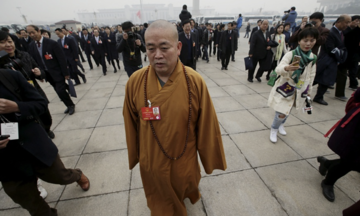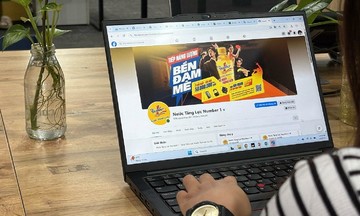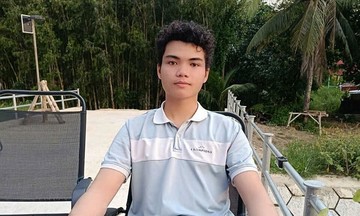The hospital's social work department provided her with a list of patients in difficult circumstances. Most were from remote areas, bringing their children to Hanoi for treatment. Some parents were illiterate and couldn't speak Vietnamese. One couple earned 3 million VND a month, while paying for rent, food, and medical expenses through loans. The hospital was also caring for an abandoned newborn. After a health check, the baby would be sent to an orphanage.
Trang decided to cover the hospital bills for 10 children, over three million VND each. "This is probably the most meaningful thing I've ever done," the 26-year-old said.
Trang explained her act of kindness was inspired by a social media trend that began in early August. She gathered her savings and contacted the hospital, where she was directed to the social work department. There, she was introduced to various support options: donating gifts, cash, or directly covering medical expenses for those most in need.
"Covering hospital bills is the most direct and effective way to support them," she said. That day, she met the patients, many of whom were moved to tears.
 |
Kieu Trang (fourth from right) pays hospital bills at the National Children's Hospital, Hanoi, August 2025. Photo: Provided by the subject |
Kieu Trang (fourth from right) pays hospital bills at the National Children's Hospital, Hanoi, August 2025. Photo: Provided by the subject
While covering strangers' medical expenses isn't new, it gained traction online after Luong Do, a TikToker with 700,000 followers, posted a video of himself at Children's Hospital 2 (TP HCM) supporting a family whose child had congenital heart disease. He covered the remaining 4 million VND of the 11 million VND bill after insurance.
Following Luong Do's lead, other TikTokers, mostly Gen Z, followed suit.
"The number of people coming to the hospital to cover strangers' bills increased by nearly 20% in just the first few days of August," said Nguyen Thi Thuy, deputy head of the social work department at Children's Hospital 2.
Previously, 10 charity groups quietly supported medical expenses for underprivileged children. Each month, the department coordinated support for over 1,000 children undergoing treatment and welcomed over 500 philanthropists.
Thuy views this trend as a positive sign, reflecting the spirit of mutual support, especially for less fortunate children. The support is channeled through the social work department to ensure proper targeting, purpose, and financial transparency. Timely aid not only eases families' burdens but also provides hope during treatment.
Pham Truong Son, director of Tinh Than Foundation and former president of the Southern Non-Profit Community, noted that Vietnamese charity reports consistently highlight the spirit of helping one another. A Mastercard Ethical Spending and Charitable Giving survey found Vietnam leading the Asia-Pacific region with 78.5% of people contributing to charity, including a significant number of young people.
He commends this act, especially when coordinated with hospital social work departments, ensuring expertise and selection of the neediest cases. "Sincere actions, amplified by KOLs on social media, resonate strongly with Vietnamese youth," Son said.
Inspired by his mother, a social worker at Gia Lai Hospital, 33-year-old Duong Anh Thien from TP HCM first covered a stranger's medical bill in 2018 with one million VND. With a stable income, he increased his contributions, sometimes reaching tens of millions of VND.
Thien often visits the social work department to review cases needing financial assistance. In emergencies, he meets the children and their families. Some parents shared stories of borrowing money at high interest rates for their children's treatment. They expressed gratitude and relief after their children survived thanks to the support.
Children's Hospital 2 TP HCM explained that the social work department acts as a bridge between philanthropists and children in need, while also protecting people from fraudulent charitable activities.
The support process begins with receiving requests via phone, email, or in person. Hospital staff verify patient information through medical records, family circumstances, treatment status, and confirmation from local authorities or the treating department.
Based on philanthropists' wishes and capabilities, the department recommends suitable cases. Support is transferred directly to families with receipts for medical prepayments, ensuring transparency and proper use. Afterward, the department provides feedback, thank-you letters, photos, and expense reports upon request.
"Covering medical expenses for strangers has been a practice across generations," Duong Anh Thien said. "I hope this trend continues to spread."
Ngoc Ngan












